JavaScript is turned off in your web browser. Turn it on to take full advantage of this site, then refresh the page.
- Skip to content
- Skip to main navigation
- Skip to footer
- Our Thinking
- Publications

An Expansion to the Experimental Use Exception to Patent Infringement in the Works?
The US Patent and Trademark Office is requesting public feedback on the current experimental use exception’s impact on technology sectors—and the public’s appetite for expanding the exception.
Technology and life sciences industries are familiar with the well-developed body of case law applying to the experimental use exception to patent infringement, but this area of the law is getting special new attention from the US Patent and Trademark Office (USPTO), which published its notice requesting comments from the public on the experimental use exception on June 28, 2024.
Reiterating its central goal of promoting “scientific, technological, and social progress” and placing a particular emphasis on the judicially created exception’s effects on agricultural technology, the USPTO is soliciting input from public stakeholders on whether the judicially created experimental use exception is sufficient to support this objective in current times and, if not, whether a statutory experimental use exception should be implemented.
HISTORICAL CONTEXT AND CURRENT JURISPRUDENCE
Experimental use exception jurisprudence was first introduced in the landmark case of Whittemore v. Cutter , in which jury instructions approved by the court established that the question of infringement turned on the prospect of benefit or profit for the accused infringer. [1]
In Whittemore , the court defined patent infringement as “the making of a machine fit for use, and with a design for profit,” stating that “it could never have been the intention of the legislature to punish a man, who constructed such a machine merely for philosophical experiments, or for the purpose of ascertaining the sufficiency of the machine to produce its described effects.”
Over time, US courts in experimental use cases have continued to rely on the prospect of profit or benefit to the accused infringer as the deciding factor, with more recent cases explicitly excluding from the exception any “use that is in any way commercial in nature” and “is not solely for amusement, to satisfy idle curiosity, or for strictly philosophical inquiry.” [2]
With respect to the life sciences industry, critics of the narrow applicability of the current exception have indicated that competitive benefits to the accused infringer often overlap with or stifle scientific inquiry into new therapies for patients.
MODELS FOR STATUTORY IMPLEMENTATION IN LIFE SCIENCES: THE ‘SAFE HARBOR’ PROVISION AND PAST LEGISLATIVE ATTEMPTS
Currently, there are only a few limited statutory exceptions barring a charge of infringement codified by statute, including the “research exemption” for plant variety protection [3] and the “safe harbor” provision implemented under the Drug Price Competition and Patent Term Restoration Act of 1984 (Hatch-Waxman Act). [4]
The “safe harbor” provision, which shields from infringement the importation, sale, offer for sale, production of, or use of patented drugs and/or biologics in preparation for seeking FDA approval (i.e., preapproval testing/preclinical research), was codified in response to the US Court of Appeals for the Federal Circuit’s decision in Roche Products Inc. v. Bolar Pharmaceutical Co. , [5] earning the nickname of the “Bolar” exemption. Despite the statute and case law dating to 1984, there remains uncertainty about the scope and actual safety to be found within the “safe harbor.”
Past legislative attempts in the US to codify exceptions to patent infringement have been unsuccessful but provide additional examples of expanding the research exception for infringement. The Patent Competitiveness and Technological Innovation Act of 1990 [6] sought to enact a specific research exemption from patent infringement, wherein it provided protection from infringement in instances where a patented invention was made or used “solely for research or experimentation purposes unless the patented invention has a primary purpose of research or experimentation.”
Additionally, the Genomic Research and Diagnostic Accessibility Act of 2002 [7] explicitly exempted from infringement the use of “any patent for or patented use of genetic sequence information for purposes of research,” excepting those entities “directly engaged in the commercial manufacture, commercial sale, or commercial offer for sale of a drug, medical device, process, or other product using such patent for or patented use of genetic sequence information.”
These statutory examples may provide models for implementing a broader-reaching experimental use provision via the United States Code. In particular, current “Safe Harbor” jurisprudence permits the use, importation, or sale of patented drugs/biologics for comparative testing for premarket approval submissions to the FDA; an expanded statutory provision might provide protection for experimental testing of patented inventions falling outside the drug/biologic field akin to the provisions set forth in previous failed attempts as set forth above.
COMPARATIVE INTERNATIONAL PERSPECTIVES ON RESEARCH EXCEPTION TO PATENT INFRINGEMENT
Globally, many jurisdictions, including those in Europe, South America, and Asia, have codified “Bolar-type” exceptions. However, many of these jurisdictions also have statutory experimental use exceptions broader than such “Bolar-type” exemptions which apply to any experimental use for any technical field—not just drugs and/or biologics. For example, the United Kingdom exempts uses of an invention “done privately and for purposes which are not commercial” or “done for experimental purposes relating to the subject-matter of the invention.” [8]
SCOPE OF PUBLIC INPUT
The USPTO is seeking input on the impact of the current experimental use exception on various technology sectors, including quantum computing, artificial intelligence, agriculture, life sciences, and climate-mitigation technologies. The agency is particularly interested in understanding how the current jurisprudence affects investment, research and development, commercialization, and patent enforcement.
The Questions for Public Comments are available at Experimental Use Exception Request for Comments , and the USPTO will be accepting comments from interested members of the public until September 26, 2024.
If you have any questions or would like more information on the issues discussed in this LawFlash, please contact any of the following:
[1] Whittemore v. Cutter, 29 F. Cas. 1120 (C.C.D. Mass. 1813) (Case No. 17,600).
[2] Madey v. Duke University, 307 F.3d 1361 (Fed. Cir. 2002) at 1352.
[3] 7 U.S.C. § 2544.
[4] Pub. L. No. 98-417, 98 Stat. 1585 (codified as amended at 35 U.S.C. §§ 156 and 271(e)).
[5] 733 F.2d 858 (Fed. Cir. 1984).
[6] Text - H.R.5598 - 101st Congress (1989-1990): Patent Competitiveness and Technological Innovation Act of 1990 | Congress.gov | Library of Congress
[7] Text - H.R.3967 - 107th Congress (2001-2002): Genomic Research and Diagnostic Accessibility Act of 2002 | Congress.gov | Library of Congress
[8] Patents Act 1977, Sections 60(5)(a) and 60(5)(b)
UF Law Scholarship Repository
- < Previous
Home > Faculty Scholarship > UF Law Faculty Publications > 91
UF Law Faculty Publications
The experimental use exception to patent infringement: do universities deserve special treatment.
Elizabeth A. Rowe , University of Florida Levin College of Law Follow
Document Type
Publication date, oclc fast subject heading, intellectual property.
The experimental use exception is a common law exception to the patent-holder's exclusive right of use. It permits the use of another's patented device when such use is for philosophical inquiry, curiosity, or amusement. It has recently come under attack by many who consider it too narrow. They fear that the courts' "narrowing" of the experimental use exception will stifle research and innovation. Much of the discontent with the doctrine has been spurred by a relatively recent Federal Circuit opinion, Madey v. Duke University , which makes clear that a research university does not receive immunity under the experimental use exception when its researchers engage in research or conduct experiments using patented inventions. This ruling has created an outcry because over the years universities appear to have assumed, albeit incorrectly, that their research was protected under the doctrine and thus that their scientists need not seek permission from patent owners before using patented devices. This Article, however, asserts that the university should be liable. Given the nature of university research today and its resemblance to industry research, universities should not receive special treatment from infringement simply by virtue of their being universities. In order to make a patent holder's right to exclude others meaningful, any attempt to broaden the activities that are exempt from infringement under the doctrine must be done sparingly and only for compelling reasons.
Recommended Citation
Elizabeth A. Rowe, The Experimental Use Exception to Patent Infringement: Do Universities Deserve Special Treatment? , 57 Hastings L.J. 921 (2006), available at http://scholarship.law.ufl.edu/facultypub/91
Since April 03, 2012
Included in
Education Law Commons , Intellectual Property Law Commons
Advanced Search
- Notify me via email or RSS
- Collections
- Disciplines
Author Corner
- Repository Home
- Faculty Profiles
University of Florida
Home | About | FAQ | My Account | Accessibility Statement
Privacy Copyright
- Search Menu
- Sign in through your institution
- Special Issues
- Author Guidelines
- Submission Site
- Open Access
- About Journal of Law and the Biosciences
- About the Duke University School of Law
- About the Harvard Law School
- About Stanford Law School
- Editorial Board
- Advertising and Corporate Services
- Journals Career Network
- Self-Archiving Policy
- Journals on Oxford Academic
- Books on Oxford Academic

Article Contents
I. the research exemption, ii. right to repair, iii. conclusion.
- < Previous
Research and repair: expanding exceptions to patent infringement in response to a pandemic
Presidential Scholar and Professor of Law, University of Utah S.J. Quinney College of Law, Adjunct Professor, Department of Human Genetics, University of Utah School of Medicine. Several of the concepts in this essay are based on a series of blog posts written by the author for InfoJustice.org sponsored by the American University Washington College of Law. The author thanks Sean Flynn for the inspiration to undertake this project.
- Article contents
- Figures & tables
- Supplementary Data
Jorge L Contreras, Research and repair: expanding exceptions to patent infringement in response to a pandemic, Journal of Law and the Biosciences , Volume 7, Issue 1, January-June 2020, lsaa014, https://doi.org/10.1093/jlb/lsaa014
- Permissions Icon Permissions
While public health emergencies such as the recent COVID-19 coronavirus pandemic strain resources, burden the economy and cause significant human suffering, they also provide opportunities to revisit established legal doctrines and consider them in a fresh light. This phenomenon is as true in patent law as it is in many other areas of law. 1 Commentators have been quick to observe the many intersections between patent law and the coronavirus pandemic, often in connection with long-standing complaints and criticisms of the system. 2 This essay does not attempt to address every patent law issue raised by the coronavirus pandemic, of which there are many. Rather, it focuses on two discrete areas of patent law through the lens of the current crisis and considers how we might adjust existing doctrine knowing what we know today.
The doctrinal areas on which this essay focuses are two long-standing but narrow exemptions from patent infringement: one that permits scientific research and one that permits the owner of a patented device to repair it. Though distinct at first glance, both of these doctrines permit activity that would otherwise be considered patent infringement. They are exceptions to the exclusivity that the law grants to patent holders—particularly the right to ‘make’ a patented article and, to a lesser degree, to ‘use’ it—and for this reason they are particularly salient when patents may impact critical lifesaving technologies.
This essay recommends broadening the scope of the research exemption to cover a larger range of research activities conducted prior to the release of a commercial product and recognizing the right of an owner of a patented product to make, or have made, replacement parts for that product, even if those parts may be covered by the claims of a patent or cross the line of ‘reconstruction’ under current law. The implementation of these adjustments, conceived in light of the current coronavirus pandemic, could facilitate increased research, development, and the use of patented technologies and better prepare the United States to deal with the next great public health crisis.
In the United States, the so-called research exemption to patent infringement (sometimes referred to as the experimental use defense 3 ) originated in the venerable 1813 case Whittemore v. Cutter, 4 in which Justice Joseph Story, sitting by designation, wrote that a patent on a machine is not infringed by someone who constructs the machine ‘merely for philosophical experiments or for the purpose of ascertaining the sufficiency of the machine to produce its described effects.’ In effect, Justice Story evokes the gentleman tinkerer—the enlightenment natural philosopher who, rather than hunting or riding, amuses himself with homemade scientific experiments and sometimes chances upon an important discovery. 5
Over the years, the scope of this exemption has waxed and waned, often reaching well beyond the idea of the gentleman tinkerer to encompass much experimental activity conducted by universities and nonprofit research institutions. 6 By the end of the twentieth century, there was a general understanding that most academic research, unless expressly conducted under contract for a commercial entity, would be immunized from patent infringement under the research exemption.
But in 2002, the research exemption in the United States experienced a significant contraction. In Madey v. Duke, 7 Duke University continued to use experimental laser equipment developed by Dr. John Madey, a former Duke researcher who held patents covering the equipment. 8 Dr. Madey sued Duke for infringement, but the district court granted summary judgment in favor of Duke. In so doing, it held that Madey failed to raise any genuine issue of material fact that would tend to refute the application of the research exemption to Duke, an institution whose ‘primary purpose is to teach, research and expand knowledge.’ 9 Madey’s burden, in the view of the district court, was to prove that Duke’s use of the patented equipment ‘had definite, cognizable, and not insubstantial commercial purposes.’ 10
The Federal Circuit disagreed on appeal. First, it held that the burden of proof in the case of the research exemption was not the patent holder’s but the alleged infringer’s. In order to be excused from infringement under the research exemption, Duke had to show that its activities were conducted ‘solely for amusement, to satisfy idle curiosity, or for strictly philosophical inquiry.’ 11 Under this standard, most research projects at Duke would not qualify for the research exemption, as they ‘unmistakably further the institution’s legitimate business objectives, including educating and enlightening students and faculty participating in these projects[,] increase the status of the institution and lure lucrative research grants, students and faculty.’ 12 Accordingly, few, if any, research activities conducted at universities today, even if they are not specifically funded by the private sector, would qualify for this exemption from patent infringement. 13 And by extension, it is probably safe to say that virtually no research conducted in the private sector would have the benefit of this exemption.
A second US research exemption, however, arises under the 1984 Drug Price Competition and Patent Term Restoration Act (commonly known as the Hatch–Waxman Act), 14 which provides mechanisms for the introduction of generic drug competition once the patents on an FDA-approved drug have expired. In particular, § 271(e)(1) of the Act provides that:
It shall not be an act of infringement to make, use, offer to sell, or sell within the United States or import into the United States a patented invention … solely for uses reasonably related to the development and submission of information under a Federal law which regulates the manufacture, use, or sale of drugs or veterinary biological products. 15
This provision creates a safe harbor for research and experimentation with drugs (including medical devices) conducted in anticipation of an application for FDA approval. The provision was created in order to allow generic drug manufacturers to begin testing their products during the last years of a drug patent’s life without infringing that patent, but it has been expanded through judicial interpretation to encompass a wide variety of drug-related R&D activity. Thus, in Merck v. Integra, 16 the Supreme Court indicated that, in addition to clinical trials, preclinical testing of drug candidates—even candidates that are eventually rejected—may be protected under the § 271(e)(1) safe harbor. Justice Scalia, writing for the Court, explained that the statute gives ‘wide berth for the use of patented drugs in activities related to the federal regulatory process.’ 17
What does this mean for coronavirus and other urgent biomedical research? First, the Hatch–Waxman safe harbor under § 271(e)(1) could protect a significant swath of R&D relating to diagnostics, vaccines, and therapeutics, so long as the resulting information might eventually be submitted to the FDA. Second, to the extent that FDA approval is not required for the manufacture or sale of certain technologies (eg drugs and devices that have already received FDA approval, 18 laboratory-developed diagnostic tests, 19 mobile software apps, 20 etc.), this may be an opportunity for the courts, and the Federal Circuit in particular, to rethink the narrow formulation of the research exemption as currently stated in Madey v. Duke along the lines of the Supreme Court’s more expansive interpretation of § 271(e)(1). 21 That is, research activities should be immunized from patent infringement to the extent that they do not involve the manufacture of products for commercial sale or their use in a commercial setting. Pure research, even if conducted with a commercial goal in mind, should qualify under the research exemption. 22
In March, 2020, two engineers in Brescia, Italy, used a desktop 3D printer to fabricate replacement valves for more than 100 ventilator machines being used to treat coronavirus patients at a local hospital. 23 There is some debate about what happened next, but early news reports indicated that a parts manufacturer threatened to sue the engineers for infringing patents on the replacement valve. 24 While the existence of the threat and the patents themselves remains murky, the incident sparked a flurry of legal commentary regarding the risk that volunteers fabricating parts for lifesaving devices, and the hospitals that use them could be liable for patent infringement. 25
Under US law, the owner of a patented device has the right to repair that device so as to preserve its useful life. 26 The recognition of this ‘right to repair’ can be traced to the 1850 Supreme Court decision in Wilson v. Simpson, 27 in which the Court ‘distinguished the right of a purchaser of a patented planing machine to replace the machine’s cutting-knives when they became dull or broken, from the patentee’s sole right to make or renew the entire machine.’ 28 The right to repair concept has been recognized in numerous recent cases, including some relating to medical devices. 29
However, the right to repair does not permit the owner of a patented device to ‘reconstruct’ that device in whole or in substantial part. 30 Reconstruction, as opposed to mere repair, represents a ‘second creation of the patented entity’ and thus infringes the exclusive right of the patent holder to ‘make’ the device. 31 In distinguishing between permitted repair and prohibited reconstruction, courts weigh ‘the remaining useful capacity of the article, and the nature and role of the replaced parts in achieving that useful capacity.’ 32 Thus, if the owner of a patented device creates new patented parts to extend the life of the device beyond its anticipated life span, this would likely constitute impermissible reconstruction, whereas if the owner simply fixes a defect in an existing part or replaces it with an unpatented part, during the normal lifetime of the device, this would likely constitute permissible repair.
What, then, about 3D printed replacement valves for ventilator devices? 3D printing technology gives consumers an inexpensive way to fabricate replacement parts for complex mechanical devices that were previously available only from specialized manufacturers. 33 Should it matter that a particular ventilator is past the end of its normal product life span or that the design of the valve in question is covered by the claims of a patent? The implications of 3D printing technology on the patent law right of repair have been recognized in the literature for some time. 34 Yet these discussions have been largely hypothetical. With the emergence of coronavirus and the sudden surge in global demand for ventilators and other medical equipment, the doctrine is likely to receive renewed attention. This is particularly the case if replacement parts made using 3D printing technology are themselves covered by patent claims (as may have been the case with the Italian ventilator parts discussed above).
In an effort to reduce household waste, in 2019 the European Union adopted ‘right to repair’ regulations for a number of appliances including televisions, washing machines, dishwashers, and refrigerators. 35 The regulations require that manufacturers make spare parts for these appliances available for installation by independent service providers for at least 10 years following the date of purchase. The EU has recently considered expanding this regulation to smartphones and other electronic equipment. 36 Similar legislation has recently been proposed in the US state of Maryland. 37 But like the EU rules, these do not address the patent law issues arising from the fabrication of new parts by 3D printing or otherwise.
Two Canadian authors, anticipating some of these issues, have argued for an expansion of the repair right under Canadian patent law (which is similar in this respect to US law), proposing that:
a consumer should be granted an all-encompassing legal right to repair and modify patent-protected items given three conditions: (1) the consumer legally purchased the original good; (2) the consumer uses the repaired or modified item for private purposes; and (3) the consumer gains no financial benefit from posting the repair or modification online for others. 38
This proposal is sweeping in scope, permitting all consumers to repair and modify patented articles for their personal use, no matter how extensive those repairs or modifications might be. 39
Whatever the merits of this proposal, addressing the issues raised by coronavirus need not go so far. Thus, an alternative, more modest, proposal might be to expand the patent law right to repair to permit the fabrication of replacement parts for patented articles to address pressing public health needs. Consideration of public health needs in fashioning an exemption from patent infringement resonates with the ‘public interest’ factor that is considered by courts when deciding whether to issue a permanent injunction against a patent infringer. 40 The expansion of the repair right proposed in this essay would stop short of eliminating a patent holder’s ability to enforce its rights against all consumers but would at least permit the owners and users of patented equipment (including hospitals, suppliers, first responders, relief organizations, and volunteers) to eliminate this threat during a crisis.
The two exceptions to patent infringement discussed in this essay—the research exemption and the right to repair—are each implicated in the coronavirus pandemic. Expanding these timeworn doctrines to address the urgent needs of the healthcare and biomedical sectors today could contribute to ending the current crisis and preparing for the next such crisis to emerge.
See, generally, Andrew W. Torrance, Patents to the Rescue—Disasters and Patent Law , 1 DePaul J. Health L. 309 (2007).
See, eg Valerie Bauman, Covid-19 Spotlights Ruling’s Chilling Effect on Diagnostic Tests , Bloomberg Law News, Mar., 23, 2020 (quoting attorneys blaming the Supreme Court’s decision in Mayo v. Prometheus, 566 U.S. 66 (2012), for shortages of reliable coronavirus diagnostic tests in private practice); Editorial, In the fight against the coronavirus outbreak, life sciences companies need certainty in 101 , IAM Blog, Mar. 23, 2020, https://www.iam-media.com/law-policy/they-focus-fighting-the-coronavirus-outbreak-now-more-ever-life-sciences-companies (‘The COVID-19 R&D surge seeking the rapid discovery and commercialisation of diagnostics, therapeutics, vaccines and cures for the present threat will lay the groundwork for a remarkable range of scientific knowledge and potential commercial and clinical applications. The extent to which these promising prospects turn into new products, new businesses and new jobs depends in significant part on restored certainty and breadth of the patentable subject matter’).
Despite its use by both courts and commentators, I avoid the term ‘experimental use’ to avoid confusion with another patent law doctrine, the experimental use exception to the public use bar to patentability under 35 U.S.C. § 102(b).
29 F. Cas. 1120, 1121 (C.C.D. Mass. 1813).
See, eg Jenny Uglow, The Lunar Men: Five Friends Whose Curiosity Changed the World (2002) (discussing Matthew Boulton, James Watt, Josiah Wedgewood, Erasmus Darwin, and Joseph Priestly).
See Henrik Holzapfel & Joshua D. Sarnoff, A Cross-Atlantic Dialog on Experimental Use and Research Tools , 48 IDEA 123 (2007).
307 F.3d 1351 (Fed Cir 2002).
The facts of this case are atypical in that Dr. Madey, rather than the university that employed him, owned the patents in question. This situation arose from an arrangement between Dr. Madey and his prior employer, Stanford University. 307 F.3d, at 1352.
266 F. Supp.2d 420, 426 (M.D.N.C.2001).
Id ., at 425.
307 F.3d, at 1362.
One commentator wryly observed that the decision ‘cabined the (common law) experimental use exemption to activities akin to the Victorian practice of observing with crude microscopes rotifers in a drop of pond water as an after-dinner amusement amongst gentlemen.’ Kevin Noonan, A Glimmer of an Idea on an Experimental Use Exemption , Patent Docs blog, Nov. 7, 2018, https://www.patentdocs.org/2018/11/a-glimmer-of-an-idea-on-an-experimental-use-exemption.html .
Public Law 98–417, codified at 21 U.S.C. § 301 et seq.
35 U.S.C. § 271(e)(1).
Merck KGAA v. Integra Lifesciences I, Ltd., 545 U.S. 193 (2005).
Id . at x. For a good discussion, see Alicia A. Russo & Jason Johnson, Research Use Exemptions to Patent Infringement for Drug Discovery and Development in the United States , 2015 Cold Spring Harbor Perspectives in Med. 5:a020933 (2015).
U.S. Food & Drug Admin., Enforcement Policy for Ventilators and Accessories and Other Respiratory Devices During the Coronavirus Disease 2019 (COVID-19) Public Health Emergency—Guidance for Industry and Food and Drug Administration Staff (Mar. 2020).
See Jonathan R Genzen, Regulation of Laboratory-Developed Tests: A Clinical Laboratory Perspective , 152 Am. J. Clinical Pathology 122 (2019).
U.S. Food & Drug Admin., Policy for Device Software Functions and Mobile Medical Applications—Guidance for Industry and Food and Drug Administration Staff (Sept. 2019).
Another route to expansion of the research exemption might be statutory. See Noonan, supra note 14 (proposing an amendment to the Bayh–Dole Act to permit academic researchers to experiment with patented inventions made using federal funding).
One ancillary result of expanding the research exemption in this manner could be the reduction of so-called reach-through royalties imposed by the holders of patents covering research tools. That is, if researchers are not required to enter into patent license agreements in order to practice certain research techniques (eg PCR, CRISPR, etc.), then the holders of patents on those techniques will lack a contractual vehicle with which to impose royalties on revenue generated by downstream users of discoveries made using such research tools. See, generally , Alfred C. Server, Nader Mousavi & Jane M. Love, Reach-Through Rights and the Patentability, Enforcement, and Licensing of Patents on Drug Discovery Tools , 1 Hastings Sci. & Tech. L.J. 21 (2009).
Cristian Fracassi & Alessandro Romaioli, We Made Copies of Ventilator Parts to Help Hospitals Fight Coronavirus , N.Y. Times, Mar. 22, 2020.
Jay Peters, Volunteers produce 3D-printed valves for life-saving coronavirus treatments , Verge (Mar. 17, 2020, updated Mar. 18, 2020), https://www.theverge.com/2020/3/17/21184308/coronavirus-italy-medical-3d-print-valves-treatments (one person involved recounted, ‘Let us say the risk to be sued exists since they bypassed a patent.’)
See Lucas Osborn, 3D Printing, Patent Infringement, and the Coronavirus , Patently-O blog, Mar. 19, 2020, https://patentlyo.com/patent/2020/03/printing-infringement-coronavirus.html . There are numerous other issues arising from unauthorized attempts to repair medical equipment, including ventilators. These include tight manufacturer controls on copyrighted service manuals and locked control software. See Jason Koebler, Hospitals Need to Repair Ventilators. Manufacturers Are Making That Impossible . Vice.com , Mar. 18, 2020, https://www.vice.com/en_us/article/wxekgx/hospitals-need-to-repair-ventilators-manufacturers-are-making-that-impossible . These issues are beyond the scope of this article.
See Jazz Photo Corp. v. Int’l Trade Comm’n, 264 F.3d 1094, 1102 (Fed. Cir. 2001).
50 U.S. (9 How.) 109 (1850).
Id ., at 123.
See, eg Kendall Co. v. Progressive Med. Tech., Inc., 85 F.3d 1570 (Fed. Cir. 1996) (permitting replacement of pressure sleeve in a patented medical device as ‘repair’).
See Sandvik Aktiebolag v. E.J. Co., 121 F.3d 669 (Fed. Cir. 1997) (making a new drill bit to replace a patented bit that could no longer be sharpened and reused constituted an infringing reconstruction of the patented article); Lummus Indus., Inc. v. D.M. E. Corp., 862 F.2d 267 (Fed. Cir. 1988) (finding that fabrication of new cutter wheels that formed a material part of the patented invention was reconstruction).
Aro Manufacturing Co. v. Convertible Top Replacement Co., 365 U.S. 336, 346 (1961).
Jazz Photo, 264 F.3d, at 1106.
News reports claim that the ventilator valves fabricated in Italy for a cost of about 1 Euro each were previously sold by the manufacturer for 10,000 Euro each. Peters, supra note 25.
See, eg Kelsey B. Wilbanks, The Challenges Of 3D Printing to the Repair-Reconstruction Doctrine In Patent Law , 20 Geo. Mason L. Rev. 1147 (2013), Tesh W. Dagne & Gosia Piasecka, The Right to Repair Doctrine and the Use of 3D Printing Technology in Canadian Patent Law , 14 Canadian J. L. & Tech. (2016), Marc D. Mimler, 3D printing and patent law—a UK perspective: apt and ready ? in 3D Printing and Beyond—Intellectual Property and Regulation, at Ch. 5 (Dinusha Mendis, Mark A. Lemley & Matthew Rimmer, Eds., 2019).
Eur. Comm’n, Regulation laying down ecodesign requirements 1 Oct., 2019, https://ec.europa.eu/energy/topics/energy-efficiency/energy-label-and-ecodesign/regulation-laying-down-ecodesign-requirements-1-october-2019_en?redir=1 .
See Roger Harrabin, EU brings in ‘right to repair’ rules for appliances , BBC News, Oct. 1, 2019, https://www.bbc.com/news/business-49884827 .
Matthew Gault, Maryland Suddenly Looks Like it Might Break John Deere’s Repair Monopoly, Vice.com , Mar. 12, 2020, https://www.vice.com/en_us/article/k7ekzw/maryland-suddenly-looks-like-it-might-break-john-deeres-repair-monopoly .
Dagne & Piasecka, supra note 35, at 264.
Expanding the scope of patent repair rights for consumer users of patented articles has been raised beyond the context of 3D printing in broader discussions of user innovation. See, eg Katherine J. Strandburg, Patent Fair Use 2.0 , 1 UC Irvine L. Rev. 265, 284–85 (2011).
See eBay Inc. v. MercExchange, L.L.C., 547 U.S. 388 (2006) (establishing four-factor test for issuance of injunctions in patent infringement cases, including one factor addressing the public interest).
Author notes
| Month: | Total Views: |
|---|---|
| May 2020 | 32 |
| June 2020 | 25 |
| July 2020 | 50 |
| August 2020 | 105 |
| September 2020 | 102 |
| October 2020 | 124 |
| November 2020 | 122 |
| December 2020 | 131 |
| January 2021 | 114 |
| February 2021 | 120 |
| March 2021 | 187 |
| April 2021 | 124 |
| May 2021 | 107 |
| June 2021 | 59 |
| July 2021 | 117 |
| August 2021 | 93 |
| September 2021 | 65 |
| October 2021 | 76 |
| November 2021 | 83 |
| December 2021 | 64 |
| January 2022 | 80 |
| February 2022 | 68 |
| March 2022 | 84 |
| April 2022 | 76 |
| May 2022 | 81 |
| June 2022 | 58 |
| July 2022 | 62 |
| August 2022 | 72 |
| September 2022 | 65 |
| October 2022 | 58 |
| November 2022 | 60 |
| December 2022 | 37 |
| January 2023 | 79 |
| February 2023 | 65 |
| March 2023 | 109 |
| April 2023 | 172 |
| May 2023 | 88 |
| June 2023 | 60 |
| July 2023 | 75 |
| August 2023 | 45 |
| September 2023 | 60 |
| October 2023 | 71 |
| November 2023 | 63 |
| December 2023 | 74 |
| January 2024 | 68 |
| February 2024 | 71 |
| March 2024 | 80 |
| April 2024 | 87 |
| May 2024 | 83 |
| June 2024 | 28 |
| July 2024 | 57 |
| August 2024 | 64 |
| September 2024 | 6 |
Email alerts
Citing articles via.
- Recommend to your Library
Affiliations
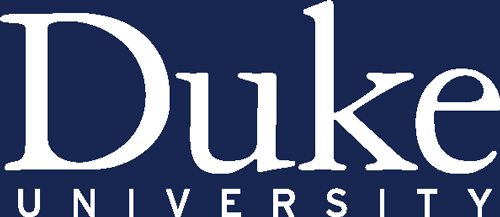
- Online ISSN 2053-9711
- Copyright © 2024 Oxford University Press and Harvard, Duke and Stanford Law Schools
- About Oxford Academic
- Publish journals with us
- University press partners
- What we publish
- New features
- Open access
- Institutional account management
- Rights and permissions
- Get help with access
- Accessibility
- Advertising
- Media enquiries
- Oxford University Press
- Oxford Languages
- University of Oxford
Oxford University Press is a department of the University of Oxford. It furthers the University's objective of excellence in research, scholarship, and education by publishing worldwide
- Copyright © 2024 Oxford University Press
- Cookie settings
- Cookie policy
- Privacy policy
- Legal notice
This Feature Is Available To Subscribers Only
Sign In or Create an Account
This PDF is available to Subscribers Only
For full access to this pdf, sign in to an existing account, or purchase an annual subscription.
- Our Professionals
- Our Insights
- Your Finnegan
- Articles & Books
- Ad Law Buzz Blog
- At the PTAB Blog
- European IP Blog
- Federal Circuit IP Blog
- INCONTESTABLE® Blog
- IP Health Blog
Prosecution First Blog
- Events & Webinars
- Unified Patent Court (UPC) Hub
The USPTO’s “Experimental Use Exception Request for Comments”
July 12, 2024
Authored and Edited by Paul W. Browning, Ph.D. ; Adriana L. Burgy ; Stacy Lewis†
The USPTO released “ Experimental Use Exception Request for Comments ” in the Federal Register on Friday June 28, 2024. 89 Fed. Reg. 53,963 (June 28, 2024).
Alleged infringers may argue in certain circumstances that activity is “experimental use” and therefore not infringing. The Federal Circuit, however, has narrowly construed the experimental defense to patent infringement. In Madey v. Duke University , the Federal Circuit concluded that ‘‘regardless of whether a particular institution or entity is engaged in an endeavor for commercial gain, so long as the act is in furtherance of the alleged infringer’s legitimate business and is not solely for amusement, to satisfy idle curiosity, or for strictly philosophical inquiry, the act does not qualify for the very narrow and strictly limited experimental use defense.’’ 307 F.3d 1361, 1352 (Fed.Cir. 2002). Similarly, in Roche Prod. V. Bolar Pharm. Co. , 733 F.2d 858 (Fed. Cir. 1984), the Federal Circuit found the defendant’s conduct in developing a generic drug product infringing since the court “cannot construe the experimental use rule so broadly as to allow a violation of the patent laws in the guise of ‘scientific inquiry,’ when that inquiry has definite, cognizable, and not insubstantial commercial purposes.” Id . at 863.
Following the Roche v. Bolar decision, the United States codified a safe harbor provision for drug development at 35 U.S.C. 271(e)(1). This, and similar exemptions in other jurisdictions, are often referred to as a “Bolar exemption.” In addition, the Plant Variety Protection Act contains exemptions that allow for others to use the protected variety in research and for breeding.
The USPTO’s “Experimental Use” request for comments seeks to investigate whether the Bolar exemption should be broadened to include activities beyond drug development, and specifically singles out the agricultural industry as an area where a Bolar exemption may be of interest. The request for comments, however, seeks input from the public about an experimental use exception for all technologies. The current effort purports to be aimed at encouraging innovation and fair competition. The USPTO poses 8 questions along those lines. For example, Question 3:
Please explain what impact, if any, a statutory experimental use exception would have on the innovation and commercialization of new technologies including with respect to: (a) research and development; (b) ability to obtain funding; (c) investment strategy; (d) licensing of patents and patent applications; (e) product development; (f) sales, including downstream and upstream sales; (g) competition; and (h) patent enforcement and litigation.
Written comments must be submitted by Sept. 26, 2024, to be considered.
Related Industries
Life Sciences
Pharmaceutical
Related Offices
Washington, DC

USPTO Requests Comments on the Experimental Use Exception
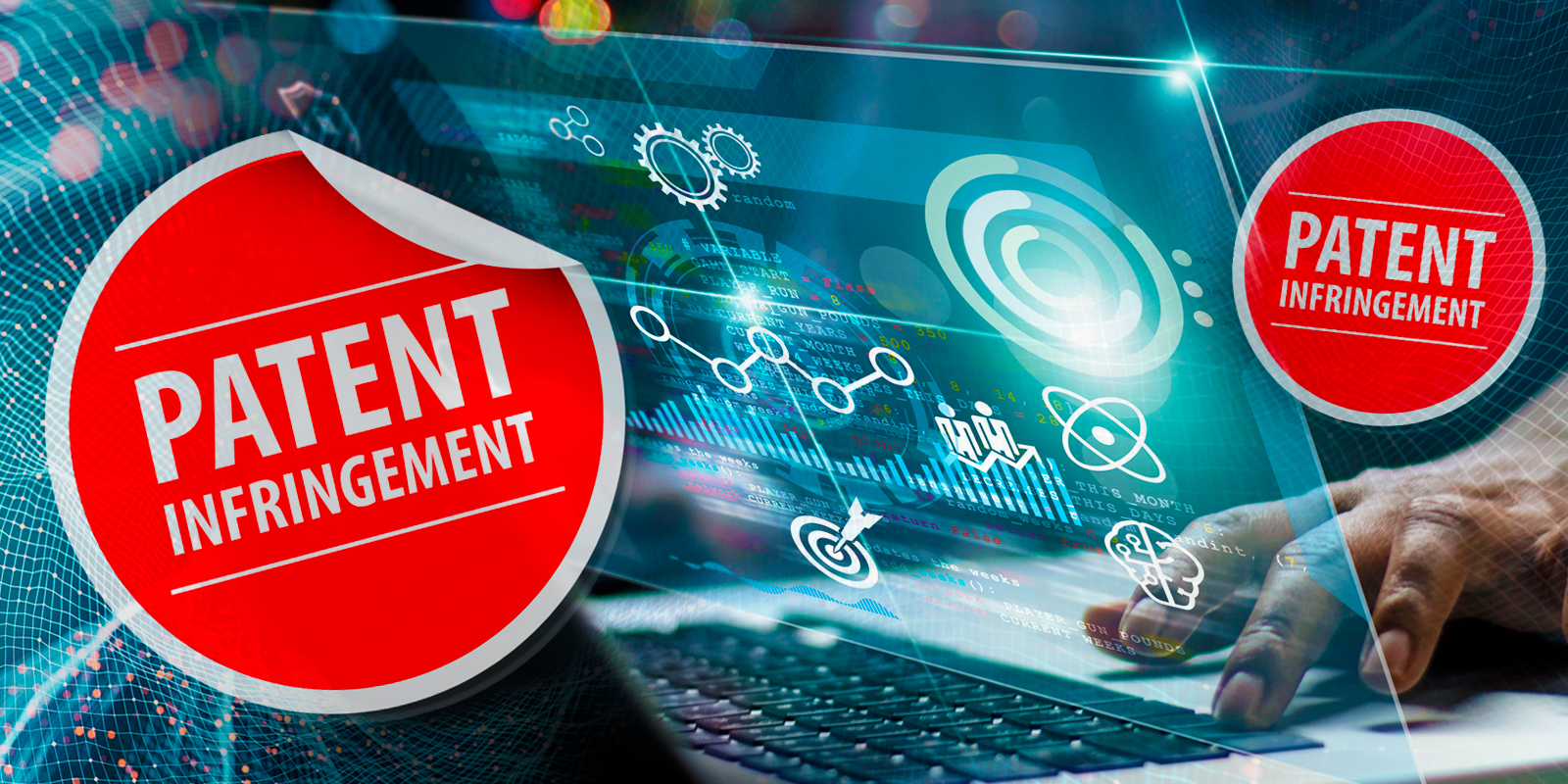
The United States Patent and Trademark Office ("USPTO") is seeking public input about the need for a statutory experimental use exception in light of the common law jurisprudence.
On June 28, 2024, the USPTO issued a request for comments ("RFC") seeking public input on the current state of the common law experimental use exception to patent infringement and whether Congress should enact a statutory experimental use exception. The RFC is "consistent with the President's 2021 Executive Order on Promoting Competition in the American Economy " and asks for public views on the impact of the experimental use exception in all technology areas. 89 Fed. Reg. 53963, 53965 (June 28, 2024).
The RFC states that under current jurisprudence an alleged infringer cannot invoke an experimental use defense if "the act [of infringement] is in furtherance of the alleged infringer's legitimate business and is not solely for amusement, to satisfy idle curiosity, or for strictly philosophical inquiry." Id. at 53964 (citing Madey v. Duke Univ., 307 F.3d 1352, 1362 (Fed. Cir. 2002)). The request compares "[t]his narrow and strictly limited experimental use defense" to the broader statutory exemptions in Europe, Asia, Canada, and Latin America. Id. In addition, the request acknowledges that Congress has enacted the safe harbor provision under 35 U.S.C. 271(e)(1), which "allows for the experimental use of a patented invention by parties to collect regulatory approval data for medical devices and drugs," and that 7 U.S.C. § 2544 contains an exemption allowing for "the use and reproduction of a protected variety for plant breeding or other bona fide research." Id. As such, the RFC asks the public if the United States should adopt a statutory experimental use exception, and if so, how it should be defined.
The USPTO seeks comments on, inter alia : (i) the impact of current U.S. experimental use exception jurisprudence on investment and/or research and development; (ii) the impact of a statutory experimental use exception on innovation and commercialization of new technologies; (iii) how the current jurisprudence has impacted the public's willingness to utilize the U.S. patent system; and (iv) how a statutory exception, if any, should be defined and public policy reasons relating to maintaining the status quo or adopting such exception.
The deadline to submit comments is September 26, 2024.

Jennifer J. Chheda Ph.D.
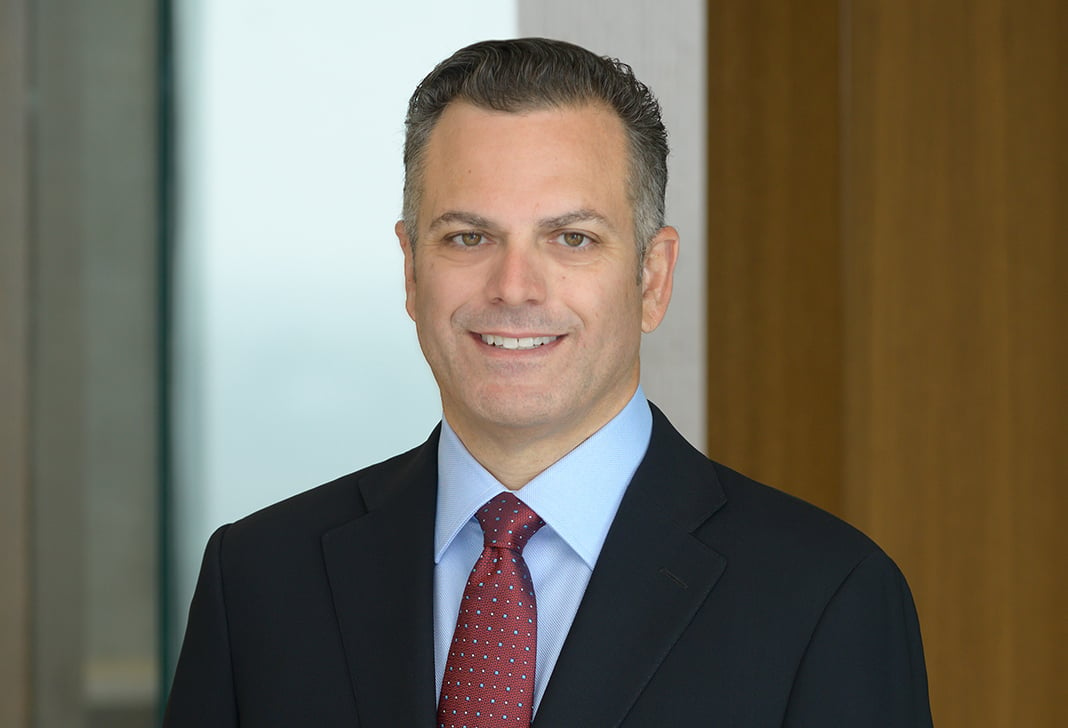
S. Christian Platt
Zachary Marshall-Carter
September 2024 Alert
August 2024 Alert
August 2024 Commentary
- Health Care & Life Sciences
- Intellectual Property
- Silicon Valley
One Firm Worldwide ®
- Singular Tradition of Client Service and Engagement with the Client
- Mutual Commitment of, and Seamless Collaboration by, a True Partnership
- Formidable Legal Talent Across Specialties and Jurisdictions
- Shared Professional Values Focused on Addressing Client Needs

Before sending, please note:

USPTO Seeks Input on Experimental Use Exception to Patent Infringement and Possible Legislative Action
By: Jeffrey W. Schmidt Ph.D. and Karen G Potter Ph.D.

On June 28, 2024, the United States Patent and Trademark Office (USPTO) issued a Notice requesting public comments on the current state of the common law experimental use exception to patent infringement and whether Congress should consider codifying the experimental use exception through legislative action. This follows from a string of other recent Notices where the USPTO is seeking public input on other areas of patent law, including a recent Notice of Proposed Rulemaking on Terminal Disclaimer practice.
The USPTO explained that the current experimental use exception is a common law exception that was created to prevent punishing someone who infringes a patent “merely for philosophical experiments, or for the purpose of ascertaining the sufficiency of the [invention] to produce its desired effects.” This led to the availability of the experimental use exception based on whether the alleged infringement involved profit-making or other commercial purposes. The USPTO describes the current state of the experimental use exception as being a “very narrow and strictly limited experimental use defense.”
The USPTO’s request for public input on the “narrow” experimental use exception appears to stem, at least in part, from divergent views of the exception and its narrow breadth. The USPTO explains that some argue that “a narrow exception enhances innovation by rewarding innovators with robust patent rights, while others noted that restricting researcher access to patented technologies would impede innovation.”
This is not the first time there has been discussion of codifying the common law experimental use exception. Unsuccessful attempts at enacting legislation to codify the exception occurred in Acts proposed in 1990 and again in 2002. This stands in contrast to many foreign jurisdictions where statutory experimental use exceptions have been enacted, including jurisdictions where life sciences research and development are robust. This includes European countries, such as Germany, the UK, France, Spain, Italy, Switzerland, and the Netherlands, Asian countries, such as Japan and China, and countries across the Americas, such as Canada and many Latin America jurisdictions, including Brazil.
A limited type of experimental use exception has, however, been codified in the U.S. in the Hatch-Waxman Act as 35 U.S.C. § 271(e), which is commonly referred to as the “safe harbor” exception rather than the experimental use exception. Section 271(e) provides that making, using, offering to sell, or selling certain patented inventions “solely for uses reasonably related to the development and submission of information under a Federal law which regulates the manufacture, use, or sale of drugs or veterinary biological products” shall not be considered an act of infringement. This “safe harbor” provision allows, for instance, a company to perform the testing required to obtain regulatory approval of a generic drug product without having to first wait for the patents covering the drug product to expire, thereby accelerating the timeline by which generic drug products can reach the market. Although certain acts can be shielded from liability for patent infringement under the § 271(e) exception where there is regulatory intent, the scope of the exception is ever evolving.
The USPTO will be accepting public comments over the next 90 days relating to the experimental use exception.
While the USPTO welcomes comments on any issues relating to the experimental use exception and its potential codification, they are particularly seeking out comments relating to the following issues:
- Please explain how the current state of U.S. experimental use exception jurisprudence impacts investment and/or research and development in any field of technology, including, but not limited to: (a) quantum computing; (b) artificial intelligence; (c) other computer-related inventions; (d) agriculture; (e) life sciences (including prescription drugs and medical devices); and (f) climate-mitigation technologies.
- Do you believe there are any technologies that are negatively affected by the current state of experimental use exception jurisprudence in the United States? If yes, please identify which technologies and explain how you believe they are affected.
- Please explain what impact, if any, a statutory experimental use exception would have on the innovation and commercialization of new technologies, including with respect to: (a) research and development; (b) ability to obtain funding; (c) investment strategy; (d) licensing of patents and patent applications; (e) product development; (f) sales, including downstream and upstream sales; (g) competition; and (h) patent enforcement and litigation.
- Has the current state of experimental use exception jurisprudence impacted decisions you have made with respect to filing, purchasing, licensing, selling, or maintaining patent applications and patents in the United States? If yes, please explain how.
- Please explain whether you believe the United States should adopt a statutory experimental use exception. In doing so, please identify your reasons, including by providing evidence and data to support your views.
- Please explain how a statutory experimental use exception, if any, should be defined. Please include specific limitations and restrictions you believe would be needed to ensure that patent rights are preserved.
- Please identify public policy reasons in support of maintaining the status quo or changing the experimental use exception in the United States.
- Please provide any additional recommendations on how best to enhance and facilitate experimental research on patented inventions in the United States.
Thank you for visiting nature.com. You are using a browser version with limited support for CSS. To obtain the best experience, we recommend you use a more up to date browser (or turn off compatibility mode in Internet Explorer). In the meantime, to ensure continued support, we are displaying the site without styles and JavaScript.
- View all journals
- Explore content
- About the journal
- Publish with us
- Sign up for alerts
- Published: 01 October 1999
Research tool patents and the experimental use exemption—a no-win situation?
- Philippe Ducor 1
Nature Biotechnology volume 17 , pages 1027–1028 ( 1999 ) Cite this article
165 Accesses
5 Citations
Metrics details
Because their very purpose is experimentation, applying the experimental use exemption to research tool patents requires a close analysis.
This is a preview of subscription content, access via your institution
Access options
Subscribe to this journal
Receive 12 print issues and online access
195,33 € per year
only 16,28 € per issue
Buy this article
- Purchase on SpringerLink
- Instant access to full article PDF
Prices may be subject to local taxes which are calculated during checkout
Barton, J. Int. Rev. of Ind. Prop. And Copy. Law 26 , 605, 614 (1995).
Google Scholar
Art. 27(b), Convention for the European Patent for the Common Market (CPC). Although it never came into force, the CPC inspired several European national law-making bodies.
H.R. 4970, 100th Cong., 2nd Sess. Chapter 9, Report 100-888, 51 (1988).
Lehrman, S. Nature 397 , 460 (1999).
Article CAS Google Scholar
Lehrman S. & Dickson, D. Nature 375 , 348 (1995).
Download references
Acknowledgements
I wish to thank John Barton from Stanford Law School and Joseph Straus from the Max-Planck Institute for Foreign and International Patent, Copyright and Competition Law for reviewing the manuscript. I also would like to thank Alex-F. Muller from the Medical Research Foundation at the University of Geneva for his support.
Author information
Authors and affiliations.
Philippe Ducor is an associate at BMG Avocats, Avenue de Champel 8c, Case Postale 385, Geneva, 12, CH-1211, Switzerland
Philippe Ducor
You can also search for this author in PubMed Google Scholar
Rights and permissions
Reprints and permissions
About this article
Cite this article.
Ducor, P. Research tool patents and the experimental use exemption—a no-win situation?. Nat Biotechnol 17 , 1027–1028 (1999). https://doi.org/10.1038/13729
Download citation
Issue Date : 01 October 1999
DOI : https://doi.org/10.1038/13729
Share this article
Anyone you share the following link with will be able to read this content:
Sorry, a shareable link is not currently available for this article.
Provided by the Springer Nature SharedIt content-sharing initiative
This article is cited by
The zinc finger nuclease monopoly.
- Christopher Thomas Scott
Nature Biotechnology (2005)
Australia experiments with 'experimental use' exemption
- Amanda McBratney
- Katherine Nielsen
- Fiona McMillan
Nature Biotechnology (2004)
Quick links
- Explore articles by subject
- Guide to authors
- Editorial policies
Sign up for the Nature Briefing newsletter — what matters in science, free to your inbox daily.
Patent Office Seeks Input on Experimental Use Exception Statute
By Aruni Soni

The US Patent and Trademark Office is seeking public comments on the state of a common law exception that allows patents to be infringed when doing so is for experimental use to better assess whether a statute is needed, according to a new Federal Register notice.
The USPTO cited an interest in learning about the impact of experimental use in “all technology areas” including quantum computing, AI, agriculture, climate-mitigation, and more, according to the Thursday filing .
The office said a “range of views on the propriety and scope of the experimental use exception” arose in the wake of the ...
Learn more about Bloomberg Law or Log In to keep reading:
Learn about bloomberg law.
AI-powered legal analytics, workflow tools and premium legal & business news.
Already a subscriber?
Log in to keep reading or access research tools.

An official website of the United States government Here’s how you know keyboard_arrow_down
An official website of the United States government
The .gov means it’s official. Federal government websites often end in .gov or .mil. Before sharing sensitive information, make sure you’re on a federal government site.
The site is secure. The https:// ensures that you are connecting to the official website and that any information you provide is encrypted and transmitted securely.
Jump to main content

USPTO seeks public feedback on the current state of the experimental use exception to patent infringement
Published on: 06/27/2024 11:37 AM
|

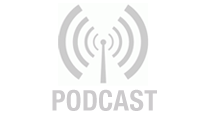



























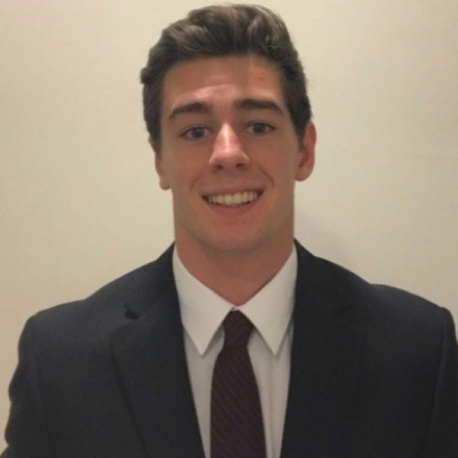
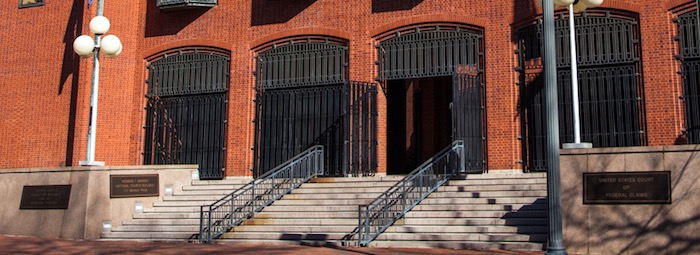
![experimental use exception to patent infringement [Advertisement]](https://ipwatchdog.com/wp-content/uploads/2024/06/LIVE-2024-sidebar-regular-price-700x500-1.jpg)
![experimental use exception to patent infringement [Advertisement]](https://ipwatchdog.com/wp-content/uploads/2021/12/WEBINAR-336-x-280-px.png)



IMAGES
VIDEO
COMMENTS
Courts have carved out a narrow exception for experimenting with patented subject matter, known colloquially as the "experimental use exception." Over the years, U.S. jurisprudence has sought to define the contours of this limited exception to patent infringement.
The US Patent and Trademark Office is requesting public feedback on the current experimental use exception's impact on technology sectors—and the public's appetite for expanding the exception. Technology and life sciences industries are familiar with the well-developed body of case law applying to the experimental use exception to patent ...
Anyone who uses a patented invention without authorization is liable for patent infringement under patent statute 35 U.S.C. § 271(a). There is a longstanding common-law exception to this provision. The experimental use exception allows for de minimis use of a patented invention when the purpose is experimental. However, within the last twenty years, the Federal…
Research Use Exemptions to Patent Infringement for Drug ...
The experimental use exception is a common law exception to the patent-holder's exclusive right of use. It permits the use of another's patented device when such use is for philosophical inquiry, curiosity, or amusement. It has recently come under attack by many who consider it too narrow. They fear that the courts' "narrowing" of the experimental use exception will stifle research and innovation.
Despite its use by both courts and commentators, I avoid the term 'experimental use' to avoid confusion with another patent law doctrine, the experimental use exception to the public use bar to patentability under 35 U.S.C. § 102(b).
The USPTO released " Experimental Use Exception Request for Comments " in the Federal Register on Friday June 28, 2024. 89 Fed. Reg. 53,963 (June 28, 2024). Alleged infringers may argue in certain circumstances that activity is "experimental use" and therefore not infringing. The Federal Circuit, however, has narrowly construed the ...
On June 28, 2024, the USPTO issued a request for comments ("RFC") seeking public input on the current state of the common law experimental use exception to patent infringement and whether Congress should enact a statutory experimental use exception. The RFC is "consistent with the President's 2021 Executive Order on Promoting Competition in the American Economy" and asks for public views on ...
have recognized experimental use as an exception to. of a patented invention "for the mere purpose experimentation, or to ascertain the verity and. specification" is exempt from infringement.2 While it is. patented invention may be made and used to test the. of the specification, the scope of the "philosophical.
On June 28, 2024, the United States Patent and Trademark Office (USPTO) issued a Notice requesting public comments on the current state of the common law experimental use exception to patent infringement and whether Congress should consider codifying the experimental use exception through legislative action.
The experimental use exemption to patent infringement has long been considered a benign issue, used mostly to exempt academic scientists from the hurdles of the patent system.
The US Patent and Trademark Office is seeking public comments on the state of a common law exception that allows patents to be infringed when doing so is for experimental use to better assess whether a statute is needed, according to a new Federal Register notice. The USPTO cited an interest in learning about the impact of experimental use in ...
200 Suzanne T. Michel, Comment, The Experimental Use Exception to Infringement Applied to Federally Funded Inventions, 7 HIGH TECH. L.J. 369 (1992). 201 Id. at 396-97. 202 Id. at 396. In general, the patent system appears to be of more value in stimulating invention and innovation by small rather than large firms.
tion and its place in patent law.2The Experimental Use DoctrineThe experimental use exception is a judge-made doctrine that provides protection for experimental uses of an invention.3 The doctrine is primarily invoked as protection against (1) the "public use" bar under 35 USC § 102, and (2) claims of patent infringement under 35 USC ...
USPTO seeks public feedback on the current state of the experimental use exception to patent infringement. At its core, the patent system aims to promote scientific, technological, and social progress; a goal advanced by both patent owners' disclosure and publication of scientific and technical knowledge in patent documents and by the grant of robust and reliable patents that incentivize ...
whether or not the experimental use exception to patent infringement can ever be reconciled fully with the purposes of the patent system. The importance at this time to fully understand the proper role of the experimental use exception comes in light of the increasing number of non- profit institutions (universities and colleges) that are securing
USPTO Seeks Input On Experimental Use Exception To Patent Infringement And Possible Legislative Action. MoFo Life Sciences on 7/1/2024. On June 28, 2024, the United States Patent and Trademark ...
On June 27, 2024, the United States Patent and Trade Office ("USPTO") published a request for comments ("RFC") in the Federal Register inquiring about the current state of the experimental use defense to patent infringement and to determine the potential value of legislative action on the issue. This RFC both supports the President's 2021 Executive Order on Promoting Competition in the ...
The experimental use exception to patent infringement permits the use of another's patented device when such use is for philosophical inquiry, curiosity, or amusement. A relatively recent Federal Circuit opinion, Madey v. Duke University, has spurred much displeasure with the doctrine.
Courts have occasionally recognized the experimental use exception as a defense to a charge of infringement. A. Justice Story's Analysis. In the 1813 decision of Whittemore v. Cutter,8 Justice Story, sitting on the Federal Circuit Court of Massachusetts in an appellate capacity, created the experimental use exception.
Finally, Part IV discusses why the experimental use exception is appropriately narrow and proposes a test that ought to guide Congress in deciding when legislative broadening is necessary. Citation Elizabeth A. Rowe , The Experimental Use Exception to Patent Infringement: Do Universities Deserve Special Treatment? , 57 Hastings Law Journal, 921 ...
Accordingly, the CAFC reversed the lower court's experimental-use determination regarding claim 2 of the '629 patent and claims 2,3, and 16 of the '302 patent and remanded the case for the ...
The national patent acts of the EU member states define research and experimental use exemptions from patent infringement that allow sufficient room for research activities to promote innovation. This review provides a comparative overview of the legal requirements and the extent and limitations of experimental use exemptions, including the so ...
The statute's language reaches back to the 1793 Patent Act, but Courts have also applied various non-statutory "exceptions" to what inventions or discoveries are eligible for patenting.